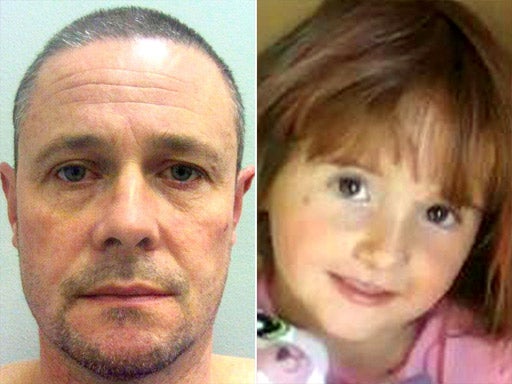The dark side of the internet: How to combat online child pornography in wake of April Jones murder trial
After Mark Bridger was revealed to have had a ‘library’ of violent and child porn, campaigners have called for an online crackdown on the availability of such perverse images. Kevin Rawlinson assesses the effectiveness of the possible options

The conviction of Mark Bridger for the murder of April Jones this week sparked new calls for a crackdown on violent and child pornography. Like Stuart Hazell, the murderer of 12-year-old Tia Sharp, Bridger had viewed explicit images of children before acting out his perverse fantasies.
While the strength of the link between internet porn and real-world sexual behaviour is far from clear, campaigners have called for search firms, internet service providers and ministers to do more to limit access to depraved images online.
Liz Longhurst, whose daughter Jane was murdered by extreme-pornography obsessive Graham Coutts in 2003, yesterday said that internet search giants such as Google need to “get their act together” on the issue.
Her demands for tighter rules were backed up by the chair of the Home Affairs Select Committee, Keith Vaz, who called for a code of conduct for internet service providers (ISPs) to ensure they remove material that “breaches acceptable behaviour standards”.
Ms Longhurst’s campaign, which began after her daughter’s death, brought about a change in the law, banning extreme pornographic images, six years later. But she is unhappy that the law is not being taken seriously. “The campaign was to get the legislation changed, but it’s only ever been implemented just a handful of times. It’s not used very often,” she said. Now, with the backing of sections of the media, a range of proposals is being put forward once again. While children’s charities such as the NSPCC argue that swift action is necessary to prevent more tragedies, others say that the proposed solutions are impractical and, therefore, are likely to do more harm than good.
Here The Independent assesses some of the options:
A more robust approach by search engines
By far the largest is Google, which has come under immense pressure to act as an online police force, preventing people from being able to access distasteful material.
There are calls for it to block access to any sites showing child pornography or violent sexual images by removing them from its search results. And yesterday the Business Secretary, Vince Cable, suggested the Government could take action against firms that do not actively do so.
The company already has a Safe Search filter, which makes it difficult for people to stumble upon sexually explicit material. Porn sites are filtered out of results, protecting the unwitting. But anyone who already knows what they are looking for can still find it relatively easily. There have also been calls for the system to be automatically activated, rather than being an opt-in, but Google said it wants to provide an authentic picture of the internet by default, which can be modified easily by those who are worried.
The issue, according to the company, is even more complicated, both technically and morally. “Google is not the internet,” said one senior source yesterday. The company’s European Public Policy Director, Scott Rubin, also pointed out that while Google has a “zero-tolerance policy” on illegal content – it even funds the Internet Watch Foundation to find and flag it – it does not write the law and legal content is just that: legal.
Block UK credit cards from being used by porn sites
This idea is simple in theory: prevent British people being able to pay for explicit content. It is law in Iceland. Many porn sites charge users for access by credit cards. Blocking them would immediately place a hurdle in front of anyone who wanted to view sexually explicit material. In 2010, Labour MP Geraint Davies called for credit card firms to be fined if their products were used to access child porn.
But the system poses numerous problems. Britain would have difficulty in acting unilaterally due to the ease with which one can get a credit card from abroad. And many sites also offer free access, supported by advertising. Blanket ban on violent porn
There have been calls in the past for violent pornography to be banned altogether and, following Ms Longhurst’s campaign, tighter controls were introduced to the Criminal Justice Bill.
Ms Longhurst believes that the current rules are not being implemented, and there are renewed demands to go further. Jim Sheridan, who sits on the Commons Culture Committee, said violent sexual images, including those depicting children, should be blocked.
But the plans are bound to be called draconian by those whose tastes are on the borders between what MPs might deem acceptable and unacceptable. The original plans put forward by Ms Luckhurst were bitterly contested in 2009.
Introduce ‘opt-in’ filters
The Government said last year it was looking at plans to introduce an “opt-in” filter for online pornography, effectively meaning that anyone who wanted to see it would have to go to their ISP to ask for the door to be opened.
A public consultation found 35 per cent support for an automatic bar on pornography and MP Claire Perry led a campaign to see it introduced. But ministers rejected the proposals in December last year.
There were fears that the system would both be insufficient and lull parents into a false sense of security. The Government asked ISPs to actively encourage parents to turn on filters instead.
Subscribe to Independent Premium to bookmark this article
Want to bookmark your favourite articles and stories to read or reference later? Start your Independent Premium subscription today.
